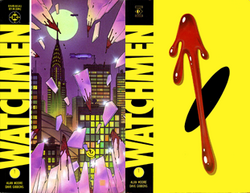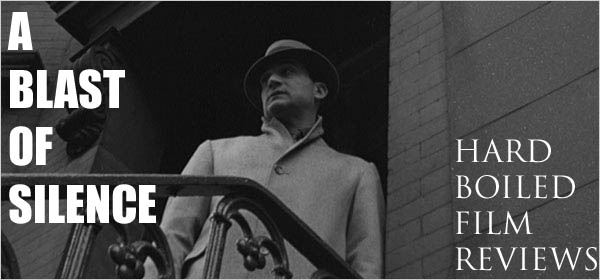
Well before the characters of Alan Moore’s graphic novel Watchmen were chosen to be turned into a live-action film they were apart of a minor comic book publishing house located in Derby, Connecticut called Charlton Comics.
Charlton Comics’, who closed its doors in 1986, main secret of early success was keeping the costs low. Part of its Connecticut connection was an integral part of this process. According to Donald Markstein, creator of the cartoon encyclopedia website toonopedia.com, operating out of Derby was much cheaper than operating out of New York City like giant comic book companies of the time did. In addition, Charlton Comics used an in-house second-hand press originally used for printing cereal boxes.
The minor comic book company was the original owner of the characters DC Comics eventually acquired in 1983 while Charlton was on its last breath. DC Comics commissioned Moore, giving him free reign to disguise and transform them into what we now know as the characters of Watchmen.
Watchmen, heralded as one of Time’s 100 best English-language novels from 1923 to the present, has been skyrocketing upwards ever since the trailer for the Zack Snyder directed film debuted before The Dark Knight last summer. Amazon.com has Watchmen in their top spot for bestsellers in books while book giant Barnes & Noble lists the graphic novel third overall in sales rank among books.
Most people, readers or not, know that the Watchmen film is an adaptation of the legendary DC produced graphic novel. What many might not be aware of is where the inspiration for these famous characters came from.
In the mid-1960s Steve Ditko, listed as one of the co-creators of Spider-Man, returned to Charlton Comics to create a few of the characters that would serve as the basis for some of the most popular Watchmen characters.
Before Jackie Earle Haley put the ink blotted mask on and became the live-action Rorschach in the big budget motion picture, Ditko created The Question, the mysterious, merciless and faceless vigilante who also wore a brown trench coat and fedora.
Ditko and Charlton Comics co-worker Joe Gill were responsible for the inspiration of Watchmen’s big blue hero, Dr. Manhattan. Captain Atom first appeared in Space Adventures #33, a March 1960 comic book. Both Captain Atom and Dr. Manhattan received their powers from a similar scientific mishap. The main difference in these two characters lies with Dr. Manhattan having much greater powers than the original incarnation of Captain Atom.
In a 2000 interview in the ninth issue of the publication Comic Book Artist, Moore confirms the fact that the Charlton Comics characters were indeed inspiration for his Watchmen characters. “The Question was Rorschach, yep. Dr. Manhattan and Captain Atom were obviously equivalent. Nite-Owl and the new (Ted Kord) Blue Beetle were equivalent,” said Moore.
Nite-Owl I and II were both inspired by the two versions of the Blue Beetle with Dan Garrett inspiring the original Nite-Owl (Hollis Mason) and Ted Kord inspiring the second Nite-Owl (Dan Dreiberg). These two are similar in how both Nite-Owl II and the Ted Kord Blue Beetle had early predecessors of the same name.
The Comedian was The Peacemaker. According to Moore, because of the free reign given, they decided to make The Comedian a “slightly right-wing, patriotic, and we mixed in a little bit of (Marvel Comics character) Nick Fury” character. With all the inspired Watchmen characters, the similarities are evident along with the differences.
Ozymandias, also known as Adrian Veidt was Thunderbolt. Moore said that Veidt did grow out of the Thunderbolt character as he liked the way Peter Cannon, the real name of Thunderbolt, used his full brain to capacity as well as being able to use his physical side.
Silk Spectre had correlation with the original characters Nightshade and The Phantom Lady. Although neither were direct representations of the Watchmen character Silk Spectre, they both worked as the sort of heroine Moore envisioned for his novel. The character was more out of female necessity than direct inspiration.
The transformation of these characters didn’t spell death for them though. A few have reappeared in their own comic mediums since then. For example, The Question picked up a copy of Watchmen to read in issue #17 and after finding Rorschach to be cool at first, deems that “Rorschach sucks” after failing to emulate his style of brutal justice.
One can only wonder what would be the outcome of such characters if the destiny of Charlton Comics had been different. If the small comic book company had never been struggling and had never had to sell its assets and rights to the larger DC Comics to make back whatever it could, would Watchmen exist? Would there be a heavily promoted film rocketing into theaters? In no way of slighting the brilliant work done by Moore, artist Dave Gibbons, and colorist John Higgins, could this all be possible without the likes of Charlton Comics?
All this hype for a film from a small comic book publication located in Derby, Conn. Derby, the town that self-declares itself as being “Connecticut’s smallest city in size”. More than 60 years after Charlton Comics became Charlton Comics, a film with a budget of $150 million has been made. All this from comics that used to cost 10 cents a pop.




No comments:
Post a Comment